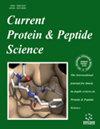Knockdown of Ubiquitin-Conjugating Enzyme E2 T Abolishes the Progression of Head and Neck Squamous Cell Carcinoma by Inhibiting NF-Κb Signaling and inducing Ferroptosis
IF 2
4区 生物学
Q4 BIOCHEMISTRY & MOLECULAR BIOLOGY
引用次数: 0
Abstract
Background: Ubiquitin-conjugating enzyme 2T (UBE2T) has been reported to be associated with uncontrolled cell growth and tumorigenesis in multiple cancer types. However, the understanding of its regulatory role in the carcinogenesis of Head And Neck Squamous Cell Carcinoma (HNSC) is limited. background: Ubiquitin-conjugating enzyme 2T (UBE2T) has been associated with uncontrolled cell growth and tumorigenesis in multiple cancer types. Methods: UBE2T expression in HNSC patient samples and the correlation between its expression and patients’ survival rates were evaluated using The Cancer Genome Atlas (TCGA) database. Cell survival and proliferation were investigated in UM-SCC1 and UM-SCC15 cells infected with control and shUBE2T lentivirus. The xenograft mouse model was established using UM-SCC15 cells to examine HNSC tumorigenesis with or without UBE2T. Western blot, qRT-PCR, and ferroptosis assays were carried out to disclose the interaction between UBE2T and NF-κB signaling and ferroptosis. objective: To study the understanding of its regulatory role in the carcinogenesis of head and neck squamous cell carcinoma (HNSC). Results: The increased expression of UBE2T was noted in tumor tissues of patients with HNSC, correlating with a significantly reduced overall survival time in this patient cohort. Knockdown of UBE2T inhibited HNSC tumorigenesis and tumor growth. Mechanistically, inhibition of UBE2T suppressed NF-κB signaling and induced ferroptosis in HNSC. method: UBE2T expression in HNSC patient samples and the correlation between its expression and patients’ survival rates were evaluated using TCGA database. Cell survival and proliferation were investigated in UM-SCC1 and UM-SCC15 cells infected with control and shUBE2T-derived lentivirus. Cell line-derived xenograft mouse model was established using UM-SCC15 cells to examine HNSC tumorigenesis with or without UBE2T. Western blot, qRT-PCR, and ferroptosis assays were carried out to disclose the interaction between UBE2T and NF-κB signaling and ferroptosis. Conclusion: Our study underscores the multifaceted role of UBE2T in HNSC, illuminating its potential as a biomarker and therapeutic target. result: High expression of UBE2T were consistently observed in HNSC tumor tissues, which correlated with a significantly shortened overall survival time among HNSC patients. Knockdown of UBE2T inhibited HNSC tumorigenesis and tumor growth. Mechanistically, inhibition of UBE2T suppressed NF-κB signaling activation and induced ferroptosis in HNSC.通过抑制NF-Κb信号和诱导铁凋亡敲除泛素结合酶E2 T可阻止头颈部鳞状细胞癌的进展
背景:据报道,泛素结合酶 2T(UBE2T)与多种癌症类型中不受控制的细胞生长和肿瘤发生有关。然而,人们对其在头颈部鳞状细胞癌(HNSC)发生过程中的调控作用了解有限:泛素结合酶 2T (UBE2T) 与多种癌症类型中不受控制的细胞生长和肿瘤发生有关。方法:利用癌症基因组图谱(TCGA)数据库评估 UBE2T 在 HNSC 患者样本中的表达及其与患者生存率之间的相关性。研究了用对照组和 shUBE2T 慢病毒感染的 UM-SCC1 和 UM-SCC15 细胞的存活和增殖情况。利用 UM-SCC15 细胞建立了异种移植小鼠模型,以检测有无 UBE2T 的 HNSC 肿瘤发生。进行了 Western 印迹、qRT-PCR 和铁突变试验,以揭示 UBE2T 与 NF-κB 信号传导和铁突变之间的相互作用:研究了解其在头颈部鳞状细胞癌(HNSC)发生过程中的调控作用。结果:UBE2T在 HNSC 患者的肿瘤组织中发现 UBE2T 的表达增加,这与该患者群的总生存时间显著缩短有关。敲除 UBE2T 可抑制 HNSC 肿瘤发生和肿瘤生长。从机制上讲,抑制 UBE2T 可抑制 NF-κB 信号传导并诱导 HNSC 中的铁变态反应:利用 TCGA 数据库评估 UBE2T 在 HNSC 患者样本中的表达及其与患者生存率之间的相关性。用对照组和 shUBE2T 衍生慢病毒感染 UM-SCC1 和 UM-SCC15 细胞,研究细胞存活和增殖情况。利用 UM-SCC15 细胞建立了细胞系衍生异种移植小鼠模型,以研究有无 UBE2T 的 HNSC 肿瘤发生情况。通过Western印迹、qRT-PCR和铁变态反应实验揭示了UBE2T与NF-κB信号传导和铁变态反应之间的相互作用。结论我们的研究强调了 UBE2T 在 HNSC 中的多方面作用,揭示了其作为生物标志物和治疗靶点的潜力:在 HNSC 肿瘤组织中持续观察到 UBE2T 的高表达,这与 HNSC 患者总生存时间的显著缩短相关。敲除 UBE2T 可抑制 HNSC 肿瘤发生和肿瘤生长。从机制上讲,抑制 UBE2T 可抑制 HNSC 中 NF-κB 信号的激活并诱导铁变态反应。
本文章由计算机程序翻译,如有差异,请以英文原文为准。
求助全文
约1分钟内获得全文
求助全文
来源期刊

Current protein & peptide science
生物-生化与分子生物学
CiteScore
5.20
自引率
0.00%
发文量
73
审稿时长
6 months
期刊介绍:
Current Protein & Peptide Science publishes full-length/mini review articles on specific aspects involving proteins, peptides, and interactions between the enzymes, the binding interactions of hormones and their receptors; the properties of transcription factors and other molecules that regulate gene expression; the reactions leading to the immune response; the process of signal transduction; the structure and function of proteins involved in the cytoskeleton and molecular motors; the properties of membrane channels and transporters; and the generation and storage of metabolic energy. In addition, reviews of experimental studies of protein folding and design are given special emphasis. Manuscripts submitted to Current Protein and Peptide Science should cover a field by discussing research from the leading laboratories in a field and should pose questions for future studies. Original papers, research articles and letter articles/short communications are not considered for publication in Current Protein & Peptide Science.
 求助内容:
求助内容: 应助结果提醒方式:
应助结果提醒方式:


